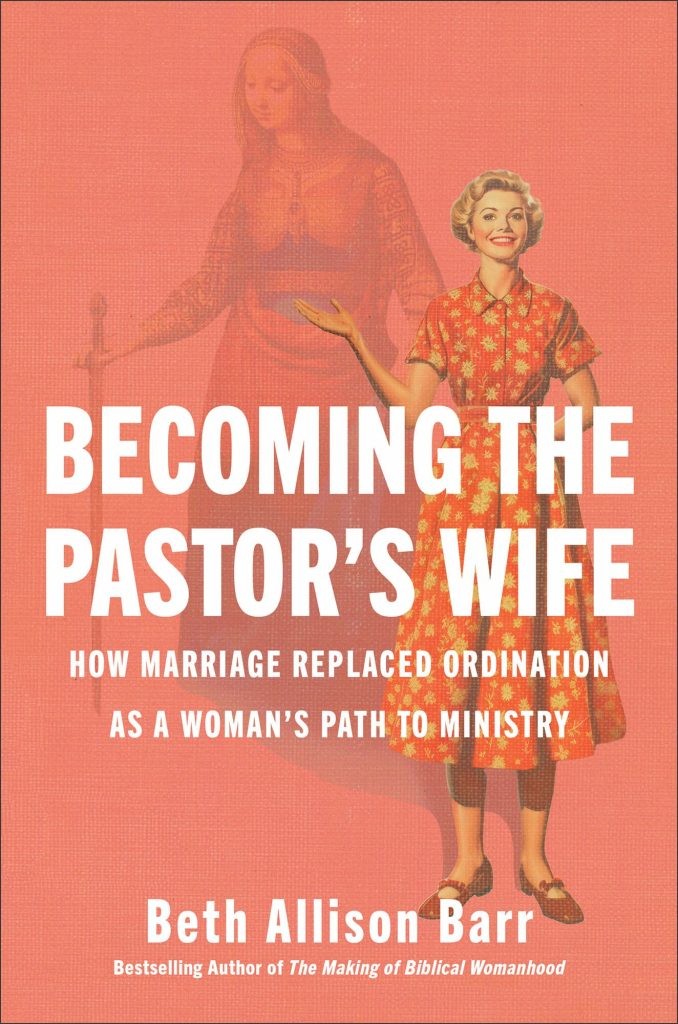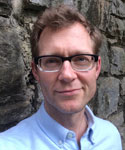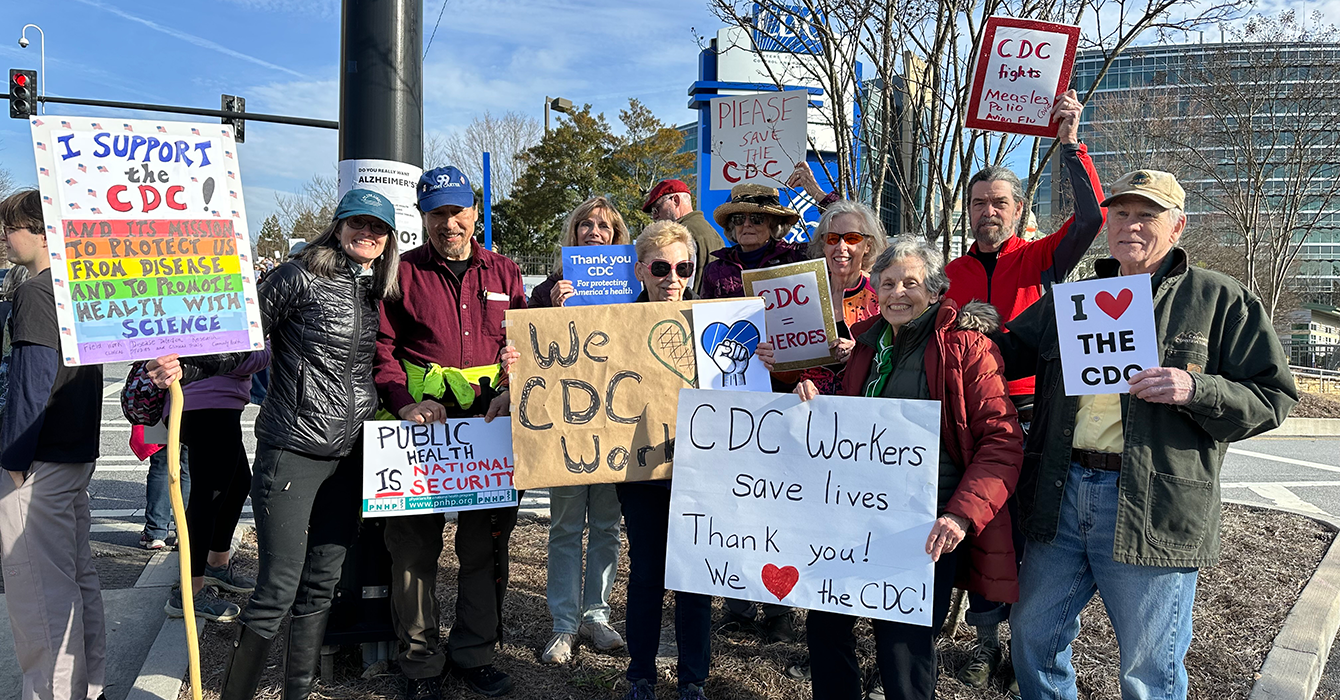Back in 2007, when the Rev. John Wilkinson and the Rev. Judy Lee Hay met regularly for coffee at the South Wedge Diner in Rochester, New York, they often talked about the plight of a growing number of the city’s churches from their denomination, the Presbyterian Church (U.S.A.).
Wilkinson, the pastor of Third Presbyterian Church, and Hay, then the pastor of Calvary St. Andrew’s Presbyterian Parish, lamented the dwindling membership and financial decline at so many of Rochester’s PCUSA churches. Their own congregations were holding steady, but others weren’t doing so well. Two had already closed. Two others were barely holding on. Five were without pastors.
They knew that the decline they had been witnessing wasn’t unique to Rochester -- or to the PCUSA. It had been happening across the nation and throughout mainline Protestant churches for decades.
Both graduates of McCormick Theological Seminary in Chicago and both trained in community organizing, Wilkinson and Hay knew the importance of relationship building for any organization. They wondered: What would happen if Rochester’s PCUSA congregations moved toward an uncertain future together, instead of separately and alone?
Yes, they were all part of the same denomination, but as with most denominations, individual congregations typically worked in isolation, operating as though they were independent “franchises.”
If your church is part of a denomination, to what extent does it act as an independent franchise?
“Presbyterians have a connectional polity, but rarely do we live that out as congregations living toward their futures,” Wilkinson said.
Whatever the future might bring, how could the city’s PCUSA churches work collaboratively in ministry, mission and outreach to help a city with serious social ills? And how could they help and support fellow congregations facing closure work through that decision and perhaps explore other alternatives?
“Nothing can guarantee church growth or success,” Wilkinson said. “But both for relationship building and strategic planning, we thought, ‘We’re better off together.’”
A network of congregations, a decade of collaboration
A year later, in 2008, Rochester’s then-existing 11 PCUSA congregations -- ranging in size from 150 members at Calvary St. Andrew’s to 1,300 at Third Presbyterian, and all by then with pastoral leadership -- launched Urban Presbyterians Together. Now known as Riverside Neighbors -- to mark the addition of several suburban congregations in 2016 -- this loose network of PCUSA congregations has spent the last decade helping one another collaborate in ministry and face the future together.
What churches in your denomination are potential partners in ministry in your community?
For many, that future did not turn out as they might have hoped. Of the original 11 congregations, two are no longer in the denomination and five have closed or dissolved, some in the past year. But with the help and support of the network of PCUSA congregations and the Presbytery of Genesee Valley, some of those have re-emerged in innovative ways or have otherwise been able to keep a form of ministerial presence in Rochester.
Wilkinson said the organization is intended not to replace the denomination but to supplement and support its efforts to help individual churches. Wilkinson appreciates the PCUSA denominational structure and how it sets up local presbyteries to serve as regional administrative bodies while still giving local congregations “enough freedom and flexibility without total chaos.”
“I’m a committed Presbyterian committed to our connectional polity, but I’m also an urban minister, so I care what happens to my own place,” he said.
The coalition’s commitment to the PCUSA hasn’t changed, Wilkinson said, but how the congregations relate to one another and to the Presbytery of Genesee Valley has evolved. The congregations have always been linked to the presbytery, but now they’ve been building relationships with each other as well.
“We now connect as a body rather than individual congregations,” he said. “We are better together, even as we face hard decisions.”
The Rev. Amy Williams Fowler, the leader of the Presbytery of Genesee Valley and a strong supporter of Riverside Neighbors and its ethos of collaboration, agrees.
“This is about building relationships from church to church, about being stronger, about being able to have a wider horizon of what needs and opportunities can be addressed,” she said.

Building relationships and ministry in Rochester
Those relationships -- and the ministries that can flow from them -- are greatly needed in Rochester.
What was once the nation’s first boomtown, thanks to the construction of the Erie Canal, now has the country’s fourth-highest child poverty rate and New York’s lowest high school graduation rate. The city wrestles with structural racism, and continues to feel the impact from numerous downsizings by manufacturing industry giants Eastman Kodak, Xerox and Bausch & Lomb.
“God calls us to change reality based on the values of our faith,” Wilkinson said. “In such a pronounced region where this stuff is real, that’s where the church’s presence is even more vital.”
Over the years, the Riverside Neighbors network has helped foster relationships among the city’s PCUSA congregations, which in turn have led to several joint ministry initiatives.
Congregations built a Habitat for Humanity house together. They have had joint worship services and choir concerts. They have hosted public conversations about race and sponsored reading groups about racial issues, studying, for example, such books as Debby Irving’s “Waking Up White: And Finding Myself in the Story of Race.”
To help connect Presbyterians from throughout the city, the group at the outset hosted get-acquainted dinners for laypeople and monthly get-togethers for pastors.
“It was really a support system for pastors who could say, ‘My church isn’t the only one wrestling with this particular issue,’” Hay said.
To strengthen bonds with the community, the group held “The Big Lunch” on the first weekend of June every year, with each congregation hosting a neighborhood dinner at its own location. These and similar efforts were about building capacity, Hay said.
“It was about conveying the message that Presbyterians are in the city, and that we’re committed to it,” she said.
To what extent is your denomination -- and your congregation -- a visible presence in your city?
In one of their most important accomplishments, the group formed Great Schools for All, a grass-roots coalition of churches, community groups, businesses and nonprofit organizations working to improve Rochester schools. Great Schools has been helping create a network of socioeconomically diverse magnet schools in the city’s school system to draw students from throughout Rochester and surrounding suburbs. The movement, which initially grew out of after-school tutoring programs sponsored by Urban Presbyterians Together, has gradually gained traction, and last summer, the Rochester Board of Education approved a resolution to consider developing a regional magnet program.
Ongoing decline, but new ways of ministry
But despite its success at forging relationships and helping congregations be in ministry together, Urban Presbyterians Together/Riverside Neighbors has not been able to halt the decline -- and in some cases, the closing -- of many member churches. Even so, some churches have worked together to find new ways to be in ministry.
In 2014, for example, South Presbyterian Church, a historic 165-year-old church in southeast Rochester, sold its building to become a “church without walls,” with a variety of worship groups, outreach ministries, and educational and social opportunities in which members can participate.
For the past two and a half years, South Presbyterian has been linked with New Life Presbyterian Church, often conducting ministries together. After months of discussion, New Life voted earlier this year to sell its building as well and become part of South Presbyterian, bringing with it the congregation’s own various ministries and programs.
The Rev. Laurie Ferguson, a Presbyterian minister and consultant hired by Riverside Neighbors through a grant from Leadership Education at Duke Divinity, helped facilitate those discussions and similar ones among other congregations facing possible closure. Ferguson said she’s been impressed by congregations’ willingness to have difficult conversations about the future.
How willing is your congregation to have difficult conversations about the future?
“They’re really turning over the ground and sowing seeds,” Ferguson said. “Even when they don’t yet know what will come of it, there is nothing wasted about putting their imagination and sense of possibility out there. They have hung in over this last year, even when it wasn’t clear where they were going.”
For several years, two other congregations found a way to share pastoral leadership. After Laurelton United Presbyterian Church lost its part-time pastor in 2015, the Rev. Katie Styrt, who had been serving as associate pastor at Gates Presbyterian Church, stepped in and began splitting her time between the two congregations. That arrangement, in turn, forged other connections between the two churches.
“I wouldn’t have been as good a pastor at Laurelton if we hadn’t been doing joint ministry together,” Styrt said. “We had mission activities and get-togethers and book studies that Laurelton would not have had the capacity to do.”
The Rev. Melissa DeRosia, the pastor of Gates Presbyterian, said the two congregations formed deep relationships that created space for empathy in a way that didn’t exist before.
“We learned their stories, and they in turn have become part of our story,” DeRosia said. “The changing church is real and hard, but we’re figuring out what it looks like to be the body of Christ in the world today moving forward.”
Where do you see the body of Christ moving forward in the world?
But sharing a pastor wasn’t enough to prevent Laurelton’s demise. Much of Styrt’s ministry at Laurelton was about helping the congregation deal with its ongoing decline. Last month the congregation voted to dissolve, and its red-brick building has been sold.
Styrt said the congregation met several times with Ferguson, and that those conversations were invaluable in helping Laurelton’s leaders clarify and process the tough changes that were ahead.
“She was good at logistics, but one of her real strengths was getting people who are sad and don’t want to talk to name what’s in the room,” Styrt said. “She got us to open up about the grief that was involved.”

Life, death and resurrection
DeRosia said that such conversations are an important and necessary part of ministry for the church today.
“This is about life and death and resurrection, and how we’re living into these new seasons together,” she said. “When people die, we don’t stand [by] their bed and yell at them over what failures they are, and we shouldn’t have that kind of language when we talk about a church dying either. We need to have ways to provide space for stories, to celebrate a life well-lived, hopeful for what the resurrection looks like for the church today.”
Sometimes, as other Riverside Neighbors congregations have discovered, resurrection can look very different from what’s expected. Life re-emerges in new shapes and forms.
Last year, after months of discussion and analysis, the congregation at Calvary St. Andrew’s voted to dissolve, and the church held its final service on Easter. That was the congregation once served by Hay, the pastor who a decade ago, over coffee with Wilkinson, helped hatch the idea for Urban Presbyterians Together.
Founded in 1856, Calvary St. Andrew’s had held its own and been a vital place of ministry during Hay’s 40 years at the church. But after her retirement in 2013, it went through a string of interim pastors and a period of decline.
Typically, the presbytery would have sold the building. In fact, several potential buyers, including a group of investors who wanted to convert the space to apartments, made purchase offers. But Riverside Neighbors and others in the community lobbied against selling the church.
Instead, they proposed using the space to launch a mission center that would tackle Rochester’s persistent poverty, education and race issues. They also wanted to continue operating Calvary St. Andrew’s long-standing food cupboard there. After study and discussion, the presbytery agreed.
Calvary St. Andrew’s is now home to the ROC SALT Mission Center (ROC for Rochester, SALT for Serving And Learning Together), which includes several new partnerships with area social justice programs and the former Calvary St. Andrew’s food bank, now known as the South Wedge Food Program.
Martha Cuthbert, co-director of the South Wedge Food Program, is grateful that the Calvary St. Andrew’s building will continue to be an important presence in the community.
“It’s a rock in the neighborhood and something that would’ve been lost without so many people caring about this church,” she said.
Looking back over the past decade, Hay said that Riverside Neighbors accomplished much. Still, the losses have been real and deeply felt.
When Hay and Wilkinson first proposed their idea a decade ago, one of their goals was that no other PCUSA churches in Rochester would close on their watch.
“We lost that battle,” she said. “There is a sense of loss when you close churches like Laurelton or Lakeside, because Presbyterians are no longer in those locations doing ministry.”
The closing of Calvary St. Andrew’s last year was “deeply painful,” she said.
“Never in my wildest dreams would I have thought they would’ve closed the church I was at for 40 years,” she said.
But she’s glad to see ministry continuing in new ways in her old church’s neighborhood.
“That is crucial,” she said. “That’s what a church needs to be, anchored in a neighborhood and making a difference. We can’t save the world, but we can act locally and do some creative things.”
Questions to consider
Questions to consider
- If your church is part of a denomination, to what extent does it act as an independent franchise? What are the benefits of being a “franchise”? Of being in a denomination?
- What churches in your denomination are potential partners in ministry in your community?
- To what extent is your denomination a visible presence in your city?
- How specifically does your church manifest its commitment to your city?
- How willing is your congregation to have difficult conversations about the future?
- Where do you see the body of Christ moving forward in the world? What would that look like In your community?











